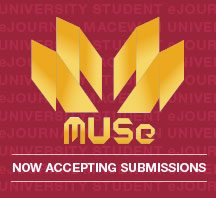Inclusive Education
Advantages and Overcoming Barriers
DOI:
https://doi.org/10.31542/muse.v6i1.2281Abstract
Schools and other learning environments have increasingly promoted equal educational opportunities among all students in recent years to create more inclusive learning environments. Inclusive education has impactful benefits on all students, not just those with diverse needs, as it is "the gateway to full participation in society" (United Nations, n.d, pg. 3). However, barriers to inclusion such as staff training and funding are necessary to consider in order to create and maintain meaningful, inclusive learning environments. In order to overcome these barriers to inclusive education, educators have been encouraged to integrate aspects of both Universal Design for Learning (UDL) and Differentiated Instruction (DI) to maintain the least restrictive environment while tailoring to individual student needs. The integration of UDL principles into classroom/learning environments promotes inclusion through supports for all students, including those with diverse needs. Educators can utilize strategies like the Three-Block Model of Universal Design for Learning (TBM) and ADAPT to aid them in the integration of UDL.
Downloads
Published
Issue
Section
License
Copyright (c) 2023 Emily Volker, Shaelyn Gupta, Brindy Brown

This work is licensed under a Creative Commons Attribution-NonCommercial 4.0 International License.
By publishing works in MUSe, authors and creators retain copyright under a Creative Commons Attribution NonCommercial (CC BY-NC) license, which allows others to share these works for non-commercial purposes as long as credit is given. The MUSe Editorial Board reserves the right to make copy-editing changes to works prior to publication to ensure they conform to the publication's style and quality standards. The Editorial Board also reserves the right to archive published submissions in MacEwan University's institutional repository, RO@M.



